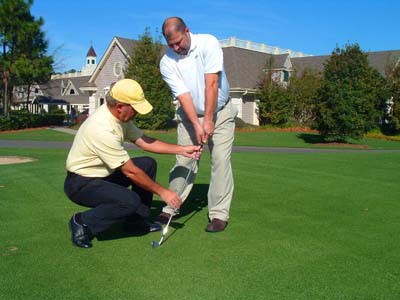Tips To Avoid YIPS Attack

In golf, the term yips refer to a condition that causes involuntary muscular contractions, resulting in a jerky or twitchy movement, ultimately affecting the game so pathetically that the victim fails to even knock the ball into the hole from a mere five feet distance! Sports psychology researchers blame performance anxiety for symptoms of yips in professional golfers. Whether you are playing an important tournament in Texas city golf courses, or enjoying some relaxed golfing at an exotic destination, this movement disorder can be a great source of embarrassment for you. Why? Because golfers with yips syndrome are often labeled as players who break down under pressure. Several coaches and sports psychologists believe that sometimes the symptoms are so bad that many promising golfers even contemplate giving up golf. If Yips has become your worst nightmare and is stopping you from playing your natural game, here is good news for you– there are several proven and time-tested techniques to help you get rid of yips for good. Read on to know about the tricks.

Detect the Root Cause
In order to take yips by its horns, you will have to understand what causes this movement disorder in the first place. According to golf experts, yips stems from deep-rooted emotional issues. It stems from the fear of failure in particular, causing anxiety and triggering negative thinking. And you end up playing at a faster pace than usual. All these negatively impact your muscular flexibility, affecting your natural ability of putting and chipping.
Change Style
Changing putting style often helps. Small hand muscles tend to cramp when you are nervous, and trigger the yips. Bring some changes to your gripping habits to minimize your vulnerability to yips.
Take up A Rhythmic Putting Practice
A series of movement on the putting green will keep your nerves relaxed and muscles flexible. Many golfers have seen improvement by following this tapping ritual: lift your right thumb off the putter, place it back on the grip. Now, rotate your head to look at the hole, and then turn your head back to look at the ball. Now swing back and forth.
Right Exercise Can Help
‘Isometric’ exercise can help you avoid experiencing uncontrollable movement disorders on the putting greens. You will need the help from one of your golf buddies to try this technique. Ask him to exert a gentle but steady pressure against the face of your putter. Now make a few successive strokes while ensuring that your follow-through swing should match your backswing. Ask your buddy to step aside as you practice a few putts. Golf coaches maintain that it gives golfers significantly more acceleration, adding to their confidence.
Use Belly Putter
A long putter will give you the feel of free swinging just like the motion of a pendulum. This helps you minimize your reliance on your hands and avoid jerky, inconsistent putts. However, many golfers find using the ‘belly putter’ easier. This is because it is shorter and hence easy to manage. Anchor the putter to a comfortable point near your belly for the best result.
Keep an Egg In The Hand
A constant grip pressure is crucial to achieve a smooth flowing stroke. Grabbing an uncooked egg will give you a better and steadier grip on your putters. Place it between your right index finger and the shaft, now take your stroke on the putts. This will teach you how to keep the pressure soft and constant.
Research shows that most yips syndromes happen when golfers are struck by performance anxiety. And yips can happen anywhere, anytime– whether you are playing in a popular Texas city golf course or a sleepy golfing resort in Tampa. Remember these tips and tee off with confidence.
